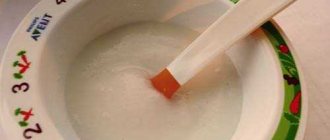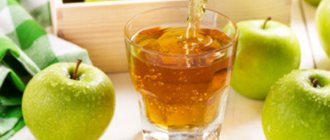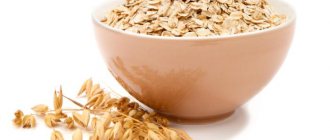Seven-month-old babies are growing quite actively and their need for nutrients and vitamins increases, as does their curiosity about adult food. They, as before, draw energy for growth and development from mother's milk or adapted formulas. But at the same time, milk alone is no longer enough and menu for 7 month old baby new products appear.
Baby's nutrition at 7 months
The menu for babies at 7 months differs in the inclusion of more products than at 5 or 6 months. When the child is already accustomed to cereals and purees, it’s time to take care of such dishes as:
- vegetable soup;
- cottage cheese and kefir;
- egg yolk;
- lean meat;
- children's cookies.
However, we should not forget that the main nutrition in infancy remains mother's milk/infant formula.
At 7 months, the formation of the baby’s digestive system continues, the chewing reflex is strengthened and the gastrointestinal tract gradually adapts to adult solid food.
The main products that provide energy and useful substances for the structure of body cells are:
- cottage cheese;
- kefir;
- yolk;
- lean meat.
If previously there were dairy-free porridges on the menu of a bottle-fed and breastfed baby, now it’s time to cook cereals with milk. But only if there is no allergic reaction to lactose. Whole milk can be introduced into the diet no earlier than a year. At 7 months, the baby eats porridge with milk, half diluted with water.
Some useful tips
- Breast milk should remain the baby's primary food. Do not rush to quickly replace feeding with new food. Adhere to the principle of gradualism: not everything at once and little by little.
- First, offer your baby complementary foods, and then breastfeed him. If you do the opposite, a baby who is full of mother’s milk will most likely not try vegetable puree.
- You can feed the baby according to the scheme proposed by the local pediatrician: offer the baby foods according to age and in the quantity recommended by the table. There is another option, which is also widely practiced. What is its essence? The child is allowed to treat himself to almost any food from the adult table, but in microscopic doses. If the child is regularly and in large quantities fed with mother's milk, then he is unlikely to have an allergic reaction or indigestion.
- Before choosing a specific product with which you want to start the first complementary feeding, focus on foods that are familiar to your baby. Offer your breastfed baby foods that you often eat yourself. Through mother's milk, the baby has already had the opportunity to get acquainted with these products, and it will be easier for him to perceive them in a new form.
The approximate diet of a seven-month-old child, which is suggested by the table:
- pureed vegetables (5-30 g);
- pureed fruits (30-50 g);
- cereal porridge (50-120 g);
- yolk (0.25);
- cottage cheese (5-20 g);
- fruit juice (5-30 g);
- vegetable oil (4 g).
Do not forget that this is only an approximate composition of dishes, which you can change at your discretion. This is the permissible maximum. You can limit yourself to the minimum: vegetables or cereals.
Vegetable dishes
An important component of a breastfed and bottle-fed baby's menu are vegetable purees and mixtures. Vegetables are rich in fiber, which promotes proper intestinal function.
If the baby does not yet eat solid pieces of food, grind the boiled vegetables with a blender or through a strainer.
The diet should include the following vegetables:
- broccoli;
- cauliflower;
- zucchini;
- potato.
Carrots and pumpkin can be introduced with great caution. If your baby is not allergic to brightly colored vegetables, let him eat a little of these foods. If you have introduced your bottle-fed baby to vegetables from the age of four/five months, you can safely introduce carrots and pumpkin into complementary foods.
How to expand your child's vegetable menu? If he has been happily eating 100 grams of cauliflower and potatoes since six months, you can introduce a new vegetable into complementary foods every third day. The fruits are boiled in a small amount of water or steamed, then pureed with a blender. To enrich the taste of the puree, add a drop of olive oil or a spoonful of butter.
Menu for the day
An approximate daily diet looks like this:
| Breakfast | Milk porridge with butter and cottage cheese |
| Dinner | Vegetable soup and vegetable puree with meat |
| Afternoon snack | Porridge with milk and fruit puree |
| Dinner | Kefir or yogurt 200 g |
It is very important to follow a diet. You cannot introduce new foods in the evening, since it is unknown how the body will react. If the baby has an allergy, then you need to wait before introducing new products.
It is important not only to feed your baby new food, but also to introduce him to food culture. So that he understands that eating is enjoyable. You cannot scold a child if he refuses to eat; maybe he is not yet ripe for complementary feeding. You need to show him by example that all family members sit at the table and eat.
Berries and fruits
From the age of four months, a baby can already eat a banana and a green apple in grated form. What can be added to a baby's complementary feeding at 7 months?
You can expand your palette of taste sensations:
- plums;
- peach;
- apricot;
- garden berries.
The child eats all this raw. The main thing is the absence of allergies to a particular fruit/berry. After introducing a new type of fruit, carefully watch the body’s reaction: will a rash or reddish spots appear on the skin? In case of a negative reaction from the body, new berries or fruits are temporarily removed from the menu.
A few words about cereals
Cereals in a baby's diet are represented by dishes in the form of porridges. Porridges add weight well, so they are recommended as the first complementary food for weak, thin children. This product is well accepted by the child's body; it usually does not cause an allergic reaction. At seven months, the baby can already try different types of porridges: buckwheat, corn, oatmeal, rice, semolina. You need to start with dairy-free porridge, then cook porridge with half milk (dilute half with water), then you can give your child porridge with only milk. Store-bought porridges are very convenient; they are healthy, tasty and quick to prepare. But our own people at home are no worse. To prepare porridge at home, you need to use a blender or sieve to achieve the desired consistency. It is better not to use salt and sugar so that the child can feel the natural taste of the porridge.
Juices and compotes
Proper drinking regimen provides the baby's body cells with moisture, the lack of which causes dehydration. What juices are included in a baby's diet at 7 months?
In addition to apple and pear, you can add juices from:
- grapes;
- cherries;
- raspberries
The child’s diet should also be supplemented with vegetable juices that he has not drunk before:
- carrot;
- pumpkin
How much vegetable juice should I give? For the first feeding, a teaspoon is enough, subsequently the norm should be increased to 60-70 grams.
Approximate table for introducing vegetable juices by day
| Days | How much juice to give |
| 1st day | teaspoon |
| 2nd day | two or three teaspoons |
| 3rd day | tablespoon |
| 4th day | two/three tablespoons |
| 5th day | three/four tablespoons |
| 6th day | four/five tablespoons |
| 7th day | six/seven tablespoons |
One tablespoon contains 10 grams of juice. A 7-month-old baby needs 70 grams of juice per day, in addition to drinking water and milk.
Principles of complementary feeding
A detailed table of foods and portions of complementary foods at 7 months will help you create a competent diet for your baby.
New products are introduced into the child’s menu in small quantities, so the main food should, as before, be mother’s milk. You need to start complementary feeding with 1 tsp. and offer food in the morning before breastfeeding. The child will be hungry and will happily taste new food. If he refuses it, the baby cannot be forced, but the introduction of complementary foods should be postponed for a while.
There are two tactics of complementary feeding: pediatric and pedagogical. The first tactic involves introducing food in small doses and those foods that are appropriate for age. The pedagogical method is based on feeding the baby from an adult table without changing the consistency of the products. When breastfeeding, following the pedagogical method, food is well absorbed by the body and the likelihood of allergies is very low. You need to feed your child new food 2-3 times a day.
If the toddler is breastfed, then pedagogical tactics are inappropriate, since the child’s enzyme system is not fully formed. Preference is still given to formula, although many mothers of eight-month-old children want to completely transfer them to solid food. At seven months, the baby should receive formula 5 times a day. If he is suffering from constipation, preference should be given to vegetables, and if he has diarrhea, preference should be given to cereal porridges.
Vegetables on the child's menu
A properly composed diet is the key to a child’s good mood
The main vegetables should be:
- potato;
- zucchini;
- cauliflower;
- broccoli;
- green pea;
- White cabbage.
If the baby is not prone to allergies, you can introduce pumpkin and carrots. All these vegetables are rich in fiber, which is very beneficial for intestinal function. The baby is introduced to each new vegetable once a week. Vegetables need to be boiled in a small amount of water or steamed, chopped with a blender, fork, or passed through a sieve. A new vegetable can be added to familiar products when preparing assorted vegetables. You can add a drop of olive oil or a small piece of butter to the puree.
Porridge
The following cereals are chosen for complementary feeding:
- buckwheat;
- rice;
- corn
To prepare porridge, you need to grind the cereal using a coffee grinder. The ratio of cereal to cooking water is 1:4. To make the porridge tastier, you need to add a little butter. When the child becomes familiar with egg yolk, you can add it to the porridge.
Meat and fish
With meat, the body receives phosphorus and amino acids, so everyone needs it. Ideal meat for complementary feeding:
- chicken;
- rabbit;
- veal;
- turkey breast.
It is necessary to feed the child with a portion of half a teaspoon and increase the portion to 50 g per day. The meat needs to be ground in a blender, or you can cut it into small pieces and add it to porridge or vegetable puree. It is unacceptable to use pork and lamb, since the meat is very fatty.
Fish is also necessary for the normal growth of a child. Boil lean fish fillets and remove all bones. You should treat your baby to this dish once a week.
Egg yolk
The first time the child can be given only one sixteenth of the yolk. It is difficult to digest, but is very beneficial for the body, as it has a high content of vitamins and minerals. If the body reacted normally and no allergic reaction occurred, then by the end of the seventh month the portion of yolk is increased to a quarter.
Fruits and berries
Is your baby already familiar with banana and green apple? The following products are introduced into complementary foods:
- peach;
- apricot;
- plum;
- grape;
- pear;
- berries from the garden.
Make a puree from the fruit and offer the baby 1 tsp. There is no need to give fruits and berries after porridge or vegetables; it is better to make them a separate dish.
After introducing the baby to new fruits, it is necessary to monitor the body’s reaction. If you notice a skin rash, redness, or changes in bowel movements, you should temporarily remove these foods from your diet.
Fruit puree with added milk diversifies the baby's diet at 7 months
Compotes and juices
It is very important to organize the child’s proper drinking regime; dehydration should not be allowed. When the baby has tried apple and pear juice, they are followed by:
- cherry;
- crimson;
- grape;
- pumpkin;
- carrot.
You need to start with 1 tsp. and within a week increase the volume to 70 g. A 7-month-old child, in addition to water and milk, needs 70 g of juice per day.
Approximate scheme for introducing juice:
- 1st day – 1 tsp.
- Day 2 – 2-3 tsp.
- 3rd day – 1 tbsp. l.
- 4th day – 2-3 tbsp. l.
- 5th day – 3-4 tbsp. l.
- 6th day – 4-5 tbsp. l.
- 7th day – 6-7 tbsp. l.
Dairy products
These products should definitely be included in the baby’s menu. Cottage cheese is rich in calcium, which is necessary for normal growth and strengthening of bones. The first portion should be ½ tsp, and by the end of the month - 30 g. Since sugar is harmful for children at this age, you can add a little breast milk to the cottage cheese. Foreign pediatricians believe that if a child eats a high-quality formula, then it is not necessary to give cottage cheese.
Important products at seven months are kefir and yogurt. They have a beneficial effect on the digestive system. However, we must remember that kefir can cause diarrhea, and cottage cheese can cause constipation. Therefore, if changes occur in the stool, you need to exclude these foods for 3-4 weeks, then reintroduce them in small portions.
Offer cottage cheese and kefir to your baby for an afternoon snack, alternating them. Cottage cheese should be given 3 times a week, 35 - 50 g, and kefir (yogurt) - 4 times a week, 150 - 200 g.
Whole milk should not be given to a child until he is one year old.
Dairy
What dairy products are included in the diet of a 7 month old baby? At this time, the baby is already eating cottage cheese and drinking kefir and yoghurt. If the baby is bottle-fed, cow's milk from the children's kitchen can also be included in the diet. A baby can drink whole milk after one year, when his gastrointestinal tract is fully adapted to digesting casein and complex protein compounds.
Kefir and cottage cheese should be alternated, offering the baby for an afternoon snack.
Table of intake of dairy products per feeding
| Product | How much to give |
| Milk | 120-150 grams daily |
| Yogurt/kefir | 4 times a week 150 grams |
| Cottage cheese | three times a week 35-50 grams |
The table describes the approximate intake of products in grams. Sometimes your baby eats less than planned, and you shouldn’t force him.
Be careful, cottage cheese!
Cottage cheese is a healthy and at the same time difficult product for a child’s body to digest. It may cause allergies or constipation. If the baby consumes a large amount of breast milk or his fontanel closes prematurely, then you should wait before introducing cottage cheese. If a child is sick with rickets, is not breastfeeding or is not breastfeeding, then this fermented milk product will not be at all superfluous. The benefits of cottage cheese are undeniable: it contains calcium, folic acid, phosphorus, vitamin B2, and kefir grains, which are so beneficial for the intestines. But it is still better to introduce it into the child’s menu closer to eight months.
How to make homemade cottage cheese for a child?
- You will need a liter of milk. It must be brought to a boil and cooled to room temperature.
- Mix sourdough starter (50-70 g) with milk: kefir, sour cream or yogurt.
- Let the milk sour.
- Heat the sour milk in a water bath for half an hour over low heat.
- The last step is to strain the resulting mixture through a sieve and cheesecloth.
Beat homemade cottage cheese with a blender. You can add berries or fruits for taste.
Meat and fish products
What kind of meat can a baby eat at this age? The child's menu should include lean dietary meat, thoroughly pureed. If you are afraid of harming your baby’s stomach, buy ready-made canned meat for children.
Suitable meat products include:
- lean beef;
- chicken breast;
- turkey breast;
- rabbit.
Pork and veal, as well as fatty beef, should not be included in the diet of a seven-month-old baby. The meat, boiled and ground in a blender, must be mixed with vegetable puree and offered to the baby for lunch. Make sure your baby chews the food rather than swallowing it right away. Food must be moistened with saliva in order to be properly digested in the stomach. Meat should be given no more than twice in 8 days.
Fish occupies an important place in a baby’s diet, but preparing this product for a baby is very difficult due to the small bones. It is better to buy ready-made jarred fish puree and feed it once a week.
Homemade or industrial complementary feeding products - which is better?
If you have a lot of free time and are very confident in the quality and safety of the products from which you prepare complementary foods, then you can make it yourself. But today, industrial complementary feeding products are optimal, especially if they are produced in Europe. They guarantee strict environmental and quality control at all stages of production, optimal composition and consistency that are suitable for a child of this particular age, provide a variety of tastes and textures and significantly save your time.
Other products
In addition to cereals, vegetable and fruit mixtures, meat and milk, you can introduce the following into your baby’s diet:
- bread;
- egg;
- oil.
Egg yolk is a valuable food product for building baby body cells. However, the yolk can cause allergies. If the baby absorbs the yolk well, you can give it twice every 8 days. The permissible portion of boiled yolk mixed with breast milk is a quarter of a teaspoon
Approximate table of food intake per week
| Product | How much to give |
| Egg yolk | 2 times a quarter spoon |
| Olive oil | daily 1/2-1 tablespoon |
| Bread | three/four times a week 35-50 grams |
Olive oil can be added to vegetable purees daily. Olives can be replaced with refined sunflower or corn oil.
The bread should be freshly baked, mixed with vegetable puree.
Some mothers let their babies chew on a crust of bread to scratch their gums. It’s better not to do this, although the baby eats the crust with pleasure.
conclusions
At the end of the 7th month of life, your child, with five meals a day while breastfeeding or feeding infant formula, can receive 180-200 grams of a special fermented milk mixture, 150-170 vegetable puree, 150-170 grams of porridge, 70-80 fruit puree, from 5-30 grams of meat puree, 10-40 grams of cottage cheese 3 times a week, 5 grams of butter and 5 grams of vegetable oil, a quarter of an yolk 2 times a week, 2-3 pieces of cookies.
Of course, all this is very individual and depends on when you started complementary feeding and on the health of your child. Therefore, always consult your pediatrician.
Read here about desserts that can be prepared from 9 months to a year.
Where to start?
The process of transitioning from breast milk to solid food is quite long. The main thing here is not to rush. Any product that we give to the baby for the first time is introduced gradually - first a teaspoon, then a tablespoon. We continue in this way until the volume reaches 100–200 grams.
It is better to give new foods to the child in the morning. If for some reason this causes bloating, colic or an allergic reaction in your baby, you will have time to call the doctor and will not ruin your baby’s afternoon or night sleep. In addition, in the morning the child is usually sleepy, rested, and therefore in a good mood. He is open to experimentation and enjoys trying something unknown.
At first, breastfeeding continues, but complementary feeding at 7 months already implies the presence of formula milk on the menu. They can replace one feeding, before bed, for example. This will teach your baby to fall asleep at the breast, which will make your life much easier. In addition, he will be more full and sleep longer at night, perhaps even until the morning.
If the baby protests
A child aged 6-7 months does not always happily perceive his mother’s attempts to feed him new, unusual food. Quite the opposite is often the case. How to be in this case? You should not force feed your baby, scold him, or try to force food into him in all other available and inaccessible ways. Remember: the point of complementary feeding is not to satisfy hunger, but to introduce you to new food.
The child should get acquainted with the concept of “food culture”, learn the new taste and composition of the product. The next meal should not evoke fear and disgust in him, but only pleasure, curiosity, the joy of communicating with his mother and other family members. Show your baby by example how to eat, feed him along with everyone else, he will be happy to repeat after the adults.
If your child is not ready to accept new food, nothing bad will happen if you postpone complementary feeding for another month. You shouldn’t traumatize a child’s psyche for the sake of following someone’s invented norms and rules.









